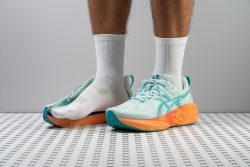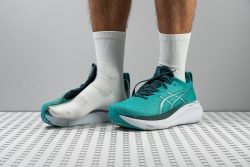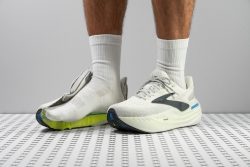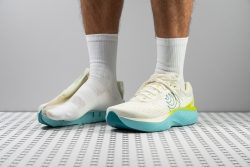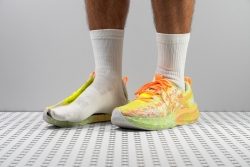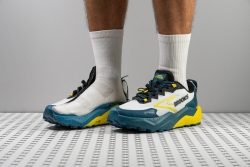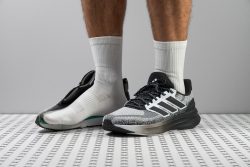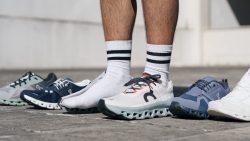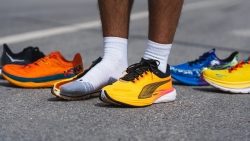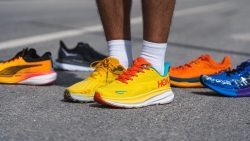7 Best Running Shoes For Orthotics in 2025

We buy shoes ourselves. We earn commissions when you buy through us, at no extra cost. Why trust us
Running shoes that can fit orthotics should be wide. Given the number of wide-running shoes on the market, choosing the best one can be troublesome. Plus, some shoes look perfect, but their insole is glued to the bottom and can't be removed. Because of that, we're here to offer the best running shoes we've found and tested that can be a home for your orthotics.
We have selected the finest models from various categories to get you out of the misery of the trial-and-error task of obtaining the suitable pair for you.
How we test running shoes for orthotics
We don’t just randomly choose the orthotic-friendly running shoes we put on this list. Here's how our process looks like behind the scenes:
- Buying running shoes with our own money. We do this to avoid brand loyalty and bias.
- Logging lots of test runs.
- We remove the insole when possible and make sure to note if it's not possible to do that without damaging the insole or the bottom.
- Slicing the shoes into pieces. We hate working in the dark. We unravel all the elements present in the shoes.
- We use our tools like a calliper, durometer, and Dremel to accurately describe each shoe with 20+ data points. We also note the thickness of the insole and how fancy or cheap it is.
Best orthotic-friendly running shoes overall
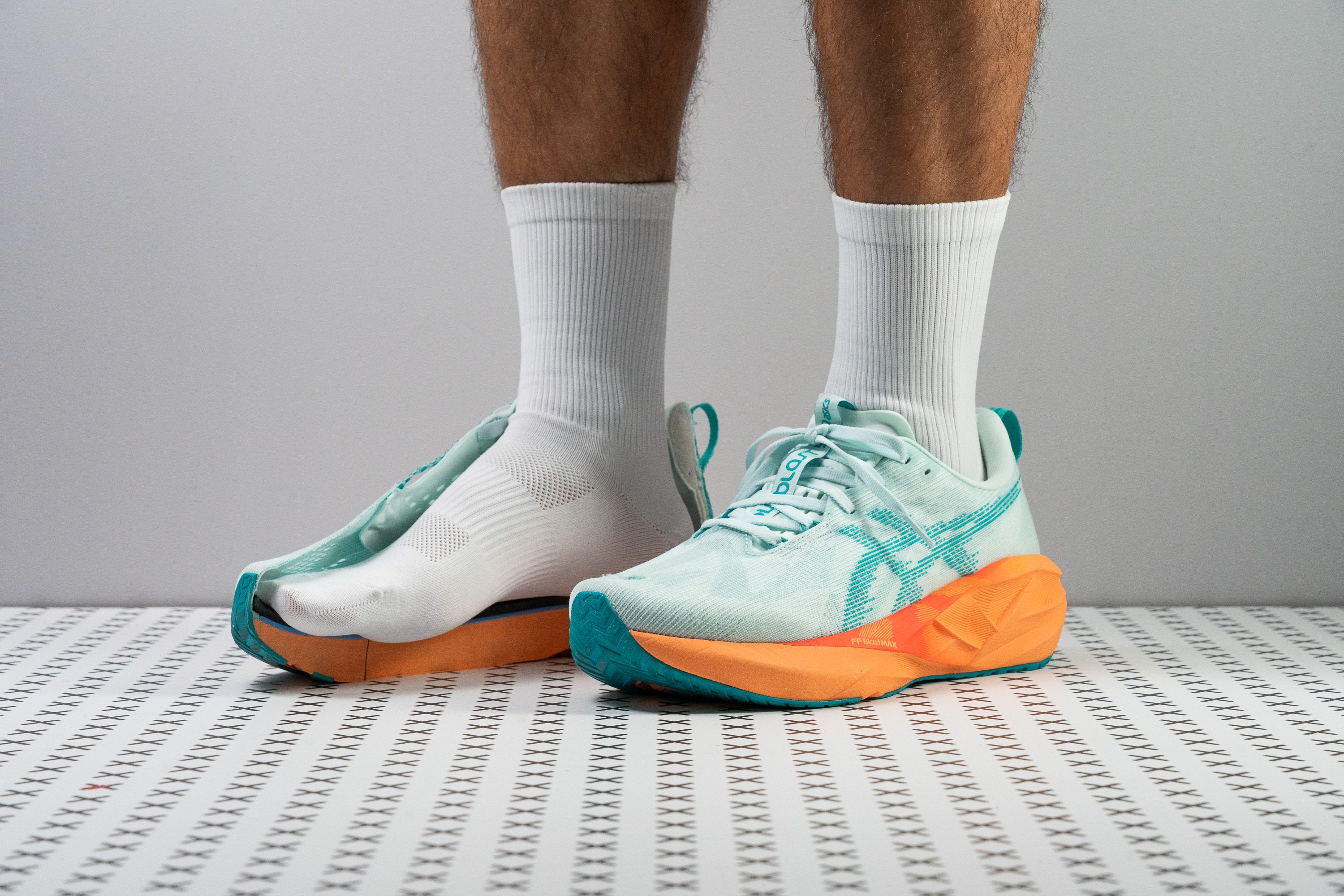























































What makes it the best?
Running in the Novablast 5 feels effortlessly smooth with its plush and peppy midsole. Our feet experienced its remarkable speed and comfort, and our lab results agree! Combined with its stable base and light build, it’s easily our best orthotic-friendly shoe.
We measured a massive stack beneath our feet, standing at 40.9/33.5 mm. It feels decadent underfoot, exceptionally guarded from the brunt of repeated landing impact, as confirmed by high shock absorption scores of 141/134 SA. Despite its softness, the midsole feels snappy and comes to life during our intervals and tempo workouts, backed up by high energy return scores of 63.6% in the heel and 66.5% in the forefoot.
With a calliper in hand, we measured the midsole to be wider than average at 122.3/97.6 mm, freely accommodating most custom orthotics. Not only that, it gives us a confidence-boosting platform that naturally secures our footing during toe-offs and landings.
Surprisingly, Novablast 5 feels lighter than it looks. Our scales show it’s only 9.0 oz (245g), measuring below the 9.3 oz (265g) average despite its above-average height. What also keeps the feeling light is its adaptive midsole, which our bend test reveals is 26.3% more flexible than average.
While Novablast 5 can sustain high speeds, we find that it still lacks the energy return and agility of a racer. We recommend supershoes to runners seeking to smash PBs.
Pros
- Improved energy return with FF Blast MAX foam
- Plushiest foam in a Novablast yet
- Keeps the same price as v4
- Higher stack height for extra cushioning
- Enhanced flexibility
- Lighter than its predecessor
- Best Novablast ever for wide feet
- Exceptional weight-to-cushion balance
- Works for short, medium and long runs
Cons
- Breathability could be improved
- Toebox durability
- Toebox durability
Best orthotic-friendly daily running shoes
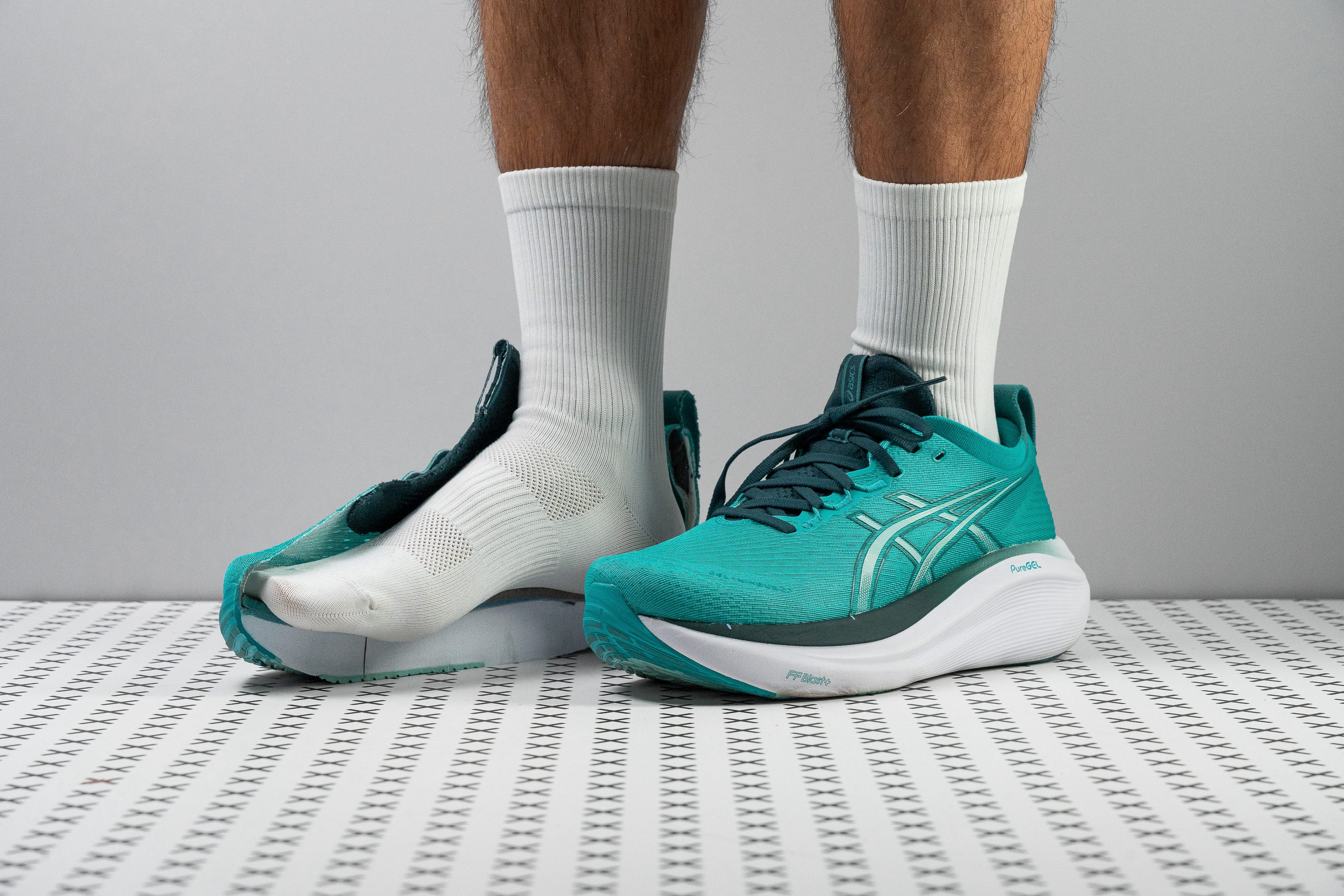


















































What makes it the best?
We cut open and ran in many orthotic-friendly shoes, and the Gel Nimbus 27 stood out as the best daily trainer. It perfectly encapsulates a reliable workhorse for gobbling daily mileage with its breathable nature, shock-absorbing cushion, and stable ride.
The FF Blast+ ECO foam is a standout feature as it offers a joint-protecting cushioning for endless miles. It’s exceptionally tall, with calliper measurements of 42.7/34.4 mm, yet its shock absorption rating of 136 SA in both the heel and forefoot is our true saving grace.
Surprisingly, each touchdown felt stable despite its pillowy midsole. Inspecting the shoe further in the lab revealed midsole sidewalls and a vast landing space, measuring 119.5/99.8 mm.
Its jacquard mesh offers a refreshing ride, handling hot weather without blisters and excessive sweating. After going through our smoke test, we confirmed its strong airflow with a high 4/5 rating.
However, we find that the shoe’s underwhelming energy return makes it ideal for easy runs. Runners who want a versatile shoe for speed training should go for another pair.
Pros
- Even more foam underfoot!
- Premium-feel, breathable upper
- Fantastic stability
- Improved toebox with extra wiggle room
- Flexible knit tongue
- True maximalist comfort for recovery runs
- Amazing heel lockdown
- Top-tier grip
- Top-tier grip
Cons
- Feels bulky and heavy
- Minor price increase
- Lacks energy return
- Minimal outsole coverage
Orthotic-friendly running shoes with the best shock absorption
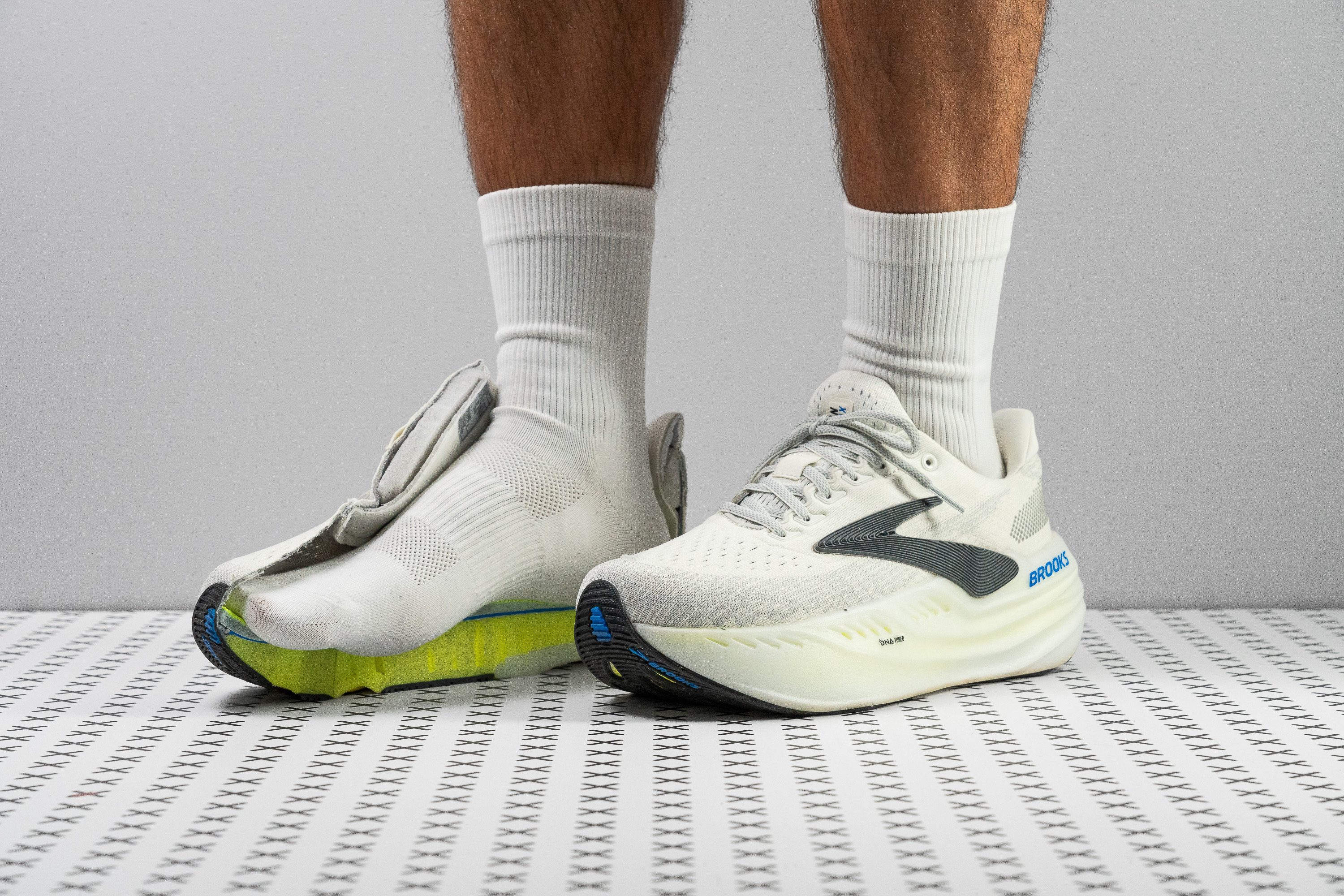

























































What makes it the best?
After rigorous testing in the lab and on the streets, we confidently pick the Brooks Glycerin Max as the ultimate choice for runners seeking maximum shock absorption in orthotics-friendly shoes. With reliable stability and indulgent cushioning, we devoured miles while keeping unsteadiness and leg fatigue away. On top of that, it offers exceptional ventilation for a refreshing ride.
Our calliper reveals a staggering stack height, notably its 42.3 mm heel. The generous slab of foam assures supreme comfort at any distance for any runner and foot strike. Even forefoot strikers have 35.7 mm of foam for impact protection. Not only that, but the cushion itself offers a high level of shock absorption. At 148/138 SA, it’s able to reduce the load on our legs by 14.7% and 30.2% better than the average, respectively.
Remarkably, we maintained our balance due to the stiff midsole that offsets potential instability from its height. The rigidity guides our foot alignment, so it takes less effort to maintain our balance. Our manual assessment confirms our sensations with a 4/5 torsional rigidity rating.
Topping it all off is a breezy upper that gave our feet room to breathe. Our smoke test confirms its exceptional breathability with a 5/5 rating.
As expected, this shoe takes on a lot of weight (10.8 oz/305g) and is 15.1% heavier than average. Those who want a more agile shoe should look elsewhere.
Pros
- Massive impact dampening
- Luxurious yet breathable upper
- New DNA Tuned midsole
- Eye-catching look
- Surprisingly stable
- Can be used as a walking shoe
- Premium materials
Cons
- Too heavy
- Midsole lacks bounce
- Poor rubber coverage
- High price tag
Best orthotic-friendly running shoes with a wide toebox
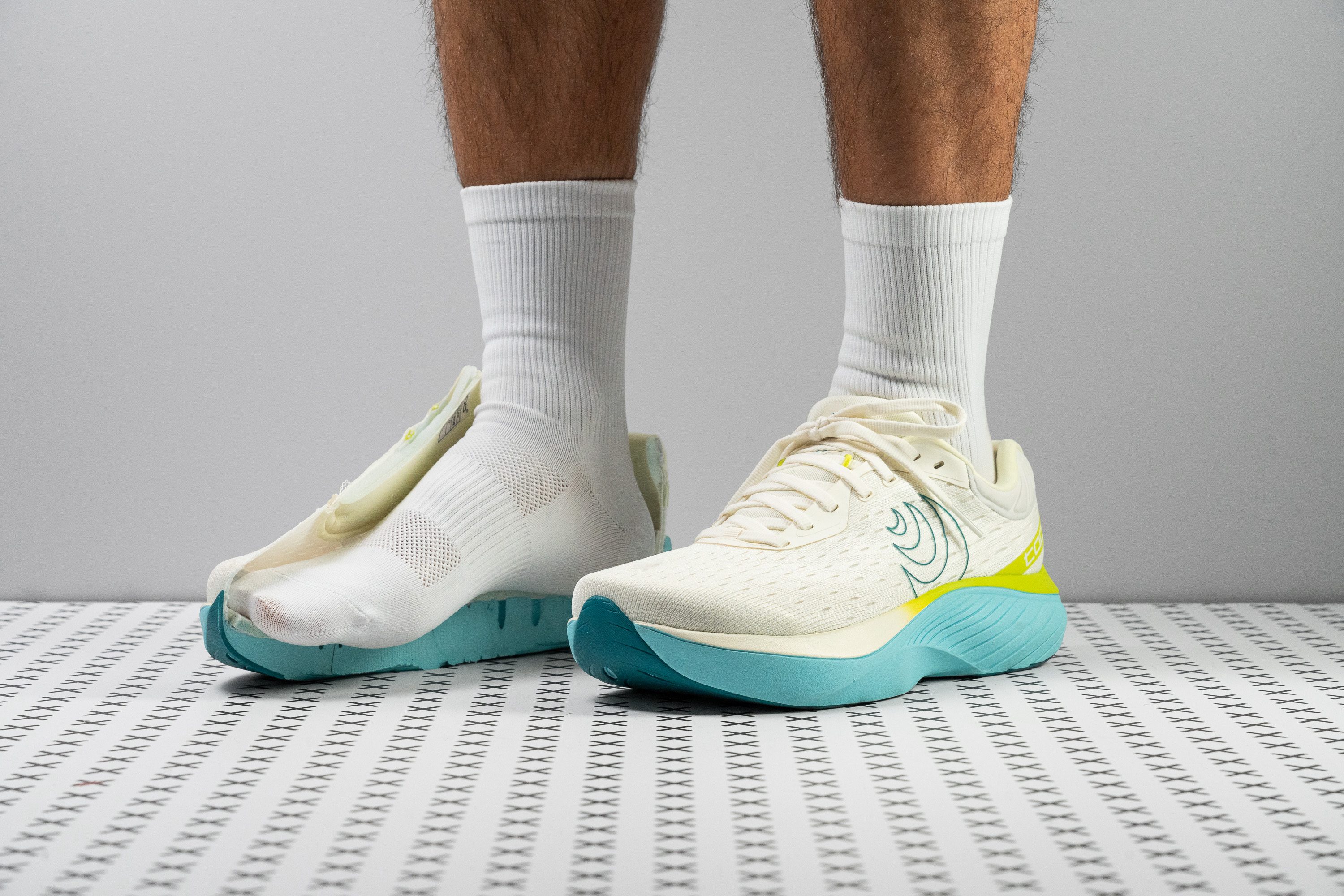

















































What makes it the best?
The Topo Atmos has generous dimensions that not only enhance its stability but also provide a forgiving fit that accommodates broad feet, bunions, and custom orthotics. Heavy on cushioning yet light on the scale, Atmos keeps surprising us in the lab. However, it ultimately stands out with the best wide toebox among orthotic-friendly running shoes.
Atmos features Topo’s anatomical toebox, which explains why all our toes rested comfortably inside the shoe. To verify further, we created a gel mould to measure the shoe’s interiors. The toebox width we recorded is 85.0 mm, which is massive and can easily accommodate wide or swollen feet compared to the 73.3 mm average. The extra room it offers is almost hard to believe!
Atmos keeps our legs fresh with its thick slab of foam measuring 37.8/32.5 mm. Besides its height, we recorded top-level shock absorption scores, notably in its forefoot at 122 SA. To balance out our footing, Atmos widens its base to 119.1/96.8 mm.
Despite its above-average dimensions, Atmos maintains a below-average figure of 9.7 oz (275g). This lightness helps reduce the energy we need to exert to lift each leg.
However, runners looking for extra energy from the shoe will be disappointed in the Atmos. It’s focused on comfort rather than performance.
Pros
- Max-cushioned comfort
- Ultra-spacious toebox
- Stable ride
- Premium Ortholite footbed
- Midfoot-friendly geometry
- Lightweight for its huge size
- Great for easy long runs
- No heel slippage
Cons
- Lacks energy return
- Not for narrow-footed runners
- Could be a bit more flexible
- Not the best for walking
Best lightweight orthotic-friendly running shoes
























































What makes it the best?
Upon lab-testing and running with orthotic-friendly shoes, we discovered ASICS Noosa Tri 16 leads the pack in the lightweight category. This workhorse excels across the board—offering responsiveness and grip for intervals, impact protection for long runs, and flexibility for recovery days. For such a light build, it’s packed with features that make our runs lively and vibrant.
At a mere 7.7 oz (217g), it’s exceptionally airy for its cushioning and remains 18.1% lighter than average. Along with its free-flowing midsole, we can move naturally and be quick on our feet. In our flex test, it bent in all the right places with a force 3.9% below average.
Noosa Tri 16 offers impressive shock absorption despite its moderate stack height. Scoring 129 SA in the heel and a notable 118 SA in the forefoot, it dampens landing impact effectively, allowing us to chase more miles with fresh legs. The shoe also offers an impressive 60.5% energy return in the forefoot, aiding our forward momentum.
In our tests, the ASICSGRIP rubber returned a sky-high 0.79 in our traction test, delivering exceptional grip and ensuring our safety and surefootedness no matter where we run.
With its above-average measurements in the forefoot and minimal 5.9 mm drop, this shoe is ideal for midfoot and forefoot strikers. Those who land on their heels should go for a steeper-dropped trainer.
Pros
- Lightweight
- Exceptional grip
- Attention-grabbing aesthetic
- Gusseted tongue
- Comfortable upper
- Great for triathlon
- Really versatile
- Fantastic price point
- Breathability
Cons
- Upper longevity
- Minimal tongue padding
- Still not enough energy return
Best orthotic-friendly trail running shoes















































What makes it the best?
Brooks Caldera 8 shines in offering subtle stability and unwavering traction while putting a premium on comfort. It guides our feet without changing our natural stride and spoils us with a cushioned midsole. We switched the insole to our orthotics easily without issues. Based on our lab results and runs, it claims the top spot for trail running among orthotic-friendly shoes.
The outsole features TrailTack Green compound, with versatile 3.6 mm lugs that handle easy to moderate terrain with ease. We tested for the rubber’s traction and recorded a remarkable 0.59 result, showing its resilience even in rainy weather.
Each footfall is met with a vast base that inspires safe landings. Our calliper shows that its 116.6/104.0 mm midsole is wider than the average. Another stability feature is the tall sidewalls that limit excessive lateral movement, proven by its maximum 5/5 torsional rigidity score.
The cushion feels comfortable, validated by our calliper with a 36.7/27.9 mm stack. Reaching shock absorption levels of 129/111 SA, our muscles and joints felt well-protected.
Given all its generous features, it lacks the agility to pick up the pace. Performance runners should go for a lighter and more responsive shoe.
Pros
- Outstanding stability
- Comfortable, smooth ride
- Versatile on easy and moderate terrain
- Secure, reliable lockdown
- Fair and reasonable price
- Dependable traction
- Cleaner, more refined look
Cons
- Still heavy
- Needs more cushioning
- Bulky, overly wide heel
- Only for slow paces
Best budget orthotic-friendly running shoes














































What makes it the best?
Kind to our wallets and our feet, the Adidas Ultrarun 5 offers comfort and versatility with its £80 price, making it 43.7% cheaper than the average running shoe. Lab results reveal that it offers a roomy fit, manoeuvrable midsole, and steady ride, making it our best budget pick in the orthotic-friendly category.
Its effortless sensation is further enhanced by its bendable midsole. In our flex test, we found that it needs only 15.0N to reach 30 degrees, which means it needs minimal effort to bend our feet and move forward. Overall, the ride feels natural and freeing.
Its accommodating fit keeps our feet relaxed, making sure we don’t have any pressure points even if our feet swell. Our solidified gel mould confirms its roomy interiors with a wide 97.6 mm measurement.
Besides the front part of the shoe, the heel also measures a broad 95.3 mm. With more room to find our footing, our landings feel well-planted and secure.
However, while the Ultrarun 5 offers a bit of everything, it doesn’t excel in anything. We recommend runners seeking energy return or more impact protection to invest in other pairs.
Pros
- Fantastic option for beginners
- Budget-friendly price
- Good durability
- Works well as a casual sneaker too
- Cosy step-in feel
- Good grip
- Ultraboost-inspired look
- Stable for heel strikers
Cons
- Feels bulky and bottom-heavy
- Lacks an energetic ride
- Runs a bit warmer than ideal

